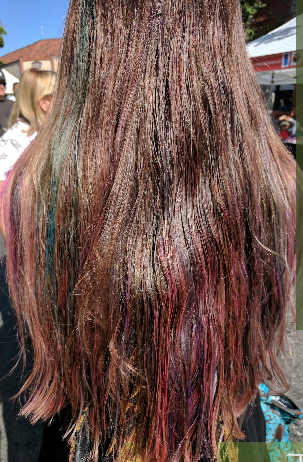
The first step is to think beyond you hair and look at the entire hair system. Conditioning starts with the food you eat, getting plenty of fresh water, and a proper amount of rest. Conditioning includes the root supply, the sebaceous glands, the scalp, the porosity of the cuticle, and the texture of the hair. You should find the method and interval that works for your specifics when creating your hair routine.
When it comes to conditioning you have many options available to you. There are several types of conditioners each having their own Rinse-Out, Leave-In, and Deep conditioners. For Très Spa, our philosophy is to keep things simple and in harmony with nature. Our conditioning starts with the organic shampoo, long before conventional conditioners would start, and carries over to our leave in products.
Rinse-Out Conditioning
Rinse-Out conditioners include lotions and creams that are typically used immediately following shampooing. Suitable for any hair type or scalp condition. It’s applied root to tip and massaged in then once it has rested a minute or tow it gets rinsed out. They are made of oils emulsified with water and other ingredients. They are used to undo any damage done by the shampoo. They claim to protect the hair by coating the hair in a protective film layer. If you don’t rinse thoroughly they can build up and leave the hair feeling heavy and even greasy. So with all the rinsing off, how much really stays behind to continue conditioning.
Leave-In Conditioning
Leave-In conditioners are lighter and stay in the hair after shampooing, drying, and styling. These are suitable for any hair type and any scalp condition. Leave-In conditioners can be oil based, water based, or an emulsification of oils with water base. They can be used in place of the rinse-out conditioner or along with. This is the category that the Très Spa treatments fall under. Leave-In conditioners are great for pre-styling as they act as a barrier to protect against heat damage. Since they are left in the hair they can help to protect the hair from environmental damage. They also help fight the frizz and can enhance the shine of healthy hair.
Deep Conditioning
Deep conditioners are much thicker and denser than the more common conditioners. They are used less frequently and typically only for extremely dry or damaged hair and scalp. Although anyone could benefit from a deep conditioning as they can be nutrient rich. Hair masks are a thick liquid that is applied to the hair and/or scalp and then allowed to rest. They are often activated with the use of external heat. For at home DIY hair masks, the hair and scalp may be wrapped in order to promote trapping natural heat.
So which one is the best one?
Ultimately the choice should be determined by analyzing your unique hair system. Experiment with different products and techniques to find what works best for you.
